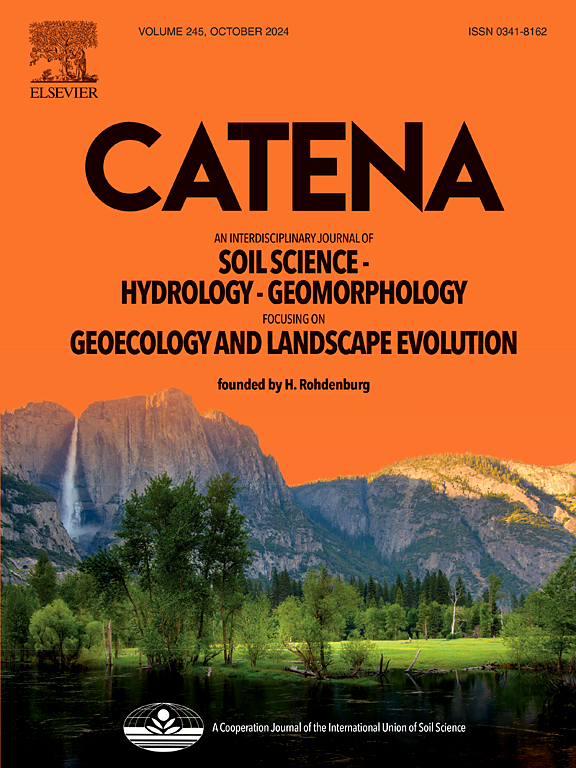Regulating and remolding of soil water flux by sparse shrubs in arid desert regions
2024-10-01 null null 245(卷), null(期), (null页)
Understanding the dynamic changes of soil water flux is essential for sustaining fragile ecosystems in desert regions worldwide. Here, we calibrated the Hydrus-1D model in a data-rich monitoring area of Mu Us Sandy Land to explore the differences in liquid and water vapor transport processes between bare land (BL) and shrubland (SL), then elucidate the regulatory mechanisms of sparse shrubs on soil water flux during the dry period. The result showed that shrubs regulated and remolded the soil hydrological processes, significantly changing the soil water transport pattern, prompting the liquid and water vapor flux to be continuously transported to the vicinity of the root zone (30-120 cm). Specifically, during the dry period, SL has multiple divergent zero-flux planes, mainly located at 0-30 cm depth of the ground. However, due to transpiration demand and soil temperature lag caused by the canopy, the liquid and water vapor flux below the zero-flux plane of SL constantly moved to the root zone, resulting in its soil water flux exhibiting the consistent downward cumulative flux in liquid and water vapor, accounting for 63% and 36% of the total water flux. In contrast, the BL's zero-flux plane was 60-75 cm inside the soil. The liquid water flux constantly migrated from the zero-flux plane up to the ground during the day and night. While the water vapor flux transferred to the zero-flux plane during the day and inverse at night. Therefore, the cumulated upward liquid and downward water vapor flux were dominated in the BL, accounting for 62% and 21% of the total water flux, respectively. This study supported the regulation of dryland shrubs on soil hydrological processes well through the perspective of water vapor transport, which was important for clarifying the mechanism of water vapor transport in the vadose zone and its ecological function.
相关推荐
- Dynamic monitoring and drivers of ecological environmental quality in the Three-North region, China: Insights based on remote sensing ecological index [2024-10-01]
- Natural Enrichment Patterns and Mechanisms of Heavy Metals in Mid-Holocene Soils of the Southern Loess Plateau [2024-10-01]
- Assessment of long-term multisource surface and subsurface soil moisture products and estimate methods on the Tibetan Plateau [2024-10-01]
- Salt-film microtopography and its origin in the megadune area of the Badain Jaran Desert [2024-10-01]
- Ensemble of optimised machine learning algorithms for predicting surface soil moisture content at a global scale [2024-10-01]



